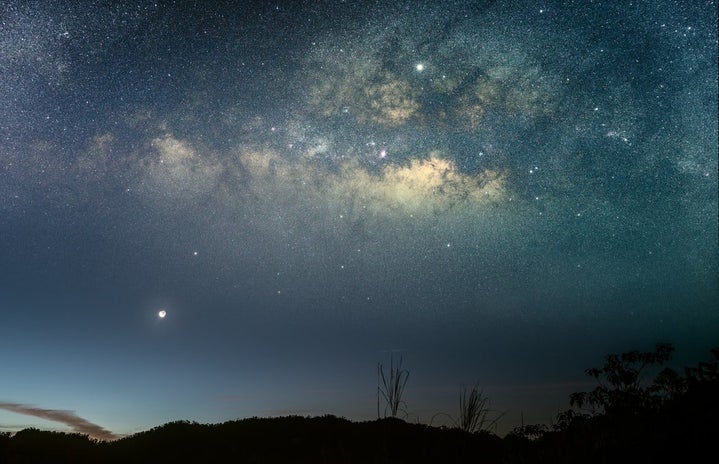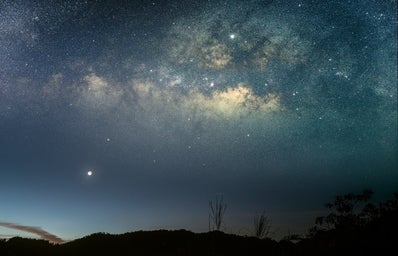News of the eclipse has been everywhere on social media, the news, and even on campus. Here’s what you need to know about the event that has caused Niagara Falls to call a State of Emergency.
What is the eclipse?
On April 8, 2024, much of North America will witness a rare solar eclipse – the astronomical phenomenon that is experienced when the moon aligns between the Earth and the Sun, eclipsing the Sun in full totality. Certain parts of North America will experience full darkness (unfortunately, Toronto will only experience 99% totality)1.

The eclipse has garnered immense news attention across North America as some people prepare to travel to see it. According to CBC News, the solar eclipse is a once-in-a-lifetime event — literally. The eclipse only occurs once every 375 years. While eclipses — both lunar and solar — occur often across North America, the Moon’s oval orbit around the Earth means that a total solar eclipse is rare, and only happens every 375 years!2 Ontario’s last total solar eclipse occurred in 1979, with Niagara Falls being one of the best places to see it.
In Ontario, Hamilton (67 kilometres from Toronto) and Niagara Falls (131 kilometres from Toronto) are expected to experience full totality, which means that the sky will darken for a few minutes while the Moon eclipses the Sun. While Niagara Falls is already a hot tourist destination, the crowd expected to amass during the eclipse has the Falls calling for a State of Emergency.
Niagara falls worries about the number of visitors
The City of Niagara Falls expects to see more than one million people gather on April 8th to see the eclipse, a number that is unprecedented and worrying for the mayor, who has declared a state of emergency.
The expected number of visitors would be the highest that the town has ever seen, according to Jim Diodati, the mayor of Niagara Falls. With infrastructure that is unable to handle this amount, Mayor Diodati worries about the stress that the visitors could bring upon traffic, emergency services, and cellphone networks.
Missed this eclipse? don’t worry!
Did you miss this eclipse and feel major FOMO? Don’t worry! As previously stated, astronomical events occur across Ontario and Canada regularly, but they receive much less news coverage in comparison to the 2024 eclipse. Here are some upcoming astronomical events3:
April 21/22: Lyrid Meteor Shower — Fragments from the Comet Thatcher can be seen on a clear night sky.
June 21: Strawberry Moon — The Moon may have a slight red tinge or golden hue to it.
August 14: Conjuction of Mars and Jupiter — Mars and Jupiter will appear close to each other — 0.31 degrees close! Similar to an eclipse, this phenomenon may appear like a singular planetary body.
October 2: Solar Eclipse — Parts of South America will witness a solar eclipse, with Argentina and Chile experiencing totality.
October 20/21: Orionid Meteor Shower — Up to 20 meteors will be visible per hour. These are fragments from the Comet Halley, who will be visible to Earth in 2061.
Look out for future astronomical events! If you’re viewing the eclipse, remember to use ISO-certified eclipse glasses to protect your eyes.
Citations
1. Canadian Space Agency. “Total Solar Eclipse of April 8, 2024.” Canadian Space Agency, 6 Mar. 2024, www.asc-csa.gc.ca/eng/astronomy/eclipses/total-solar-eclipse.asp.
2. Li, Justin. “Niagara Falls Declares State of Emergency in Advance of Huge Influx of Eclipse Visitors.” CBC, 30 Mar. 2024, www.cbc.ca/news/canada/hamilton/solar-eclipse-niagara-falls-1.7159987#:~:text=The%20mayor%20of%20Niagara%20Falls%2C%20Ont.%2C%20says%20a,people%20coming%20to%20observe%20the%20total%20solar%20eclipse.
3. Astronomical Events 2024. www.timeanddate.com/astronomy/sights-to-see.html.


